Now you are directly inside of a residence. Here is an entrance area with shoe closet and a slightly raised step leading into the home. The lighting for this area is sometimes controlled by a light switch and sometimes a motion sensor.
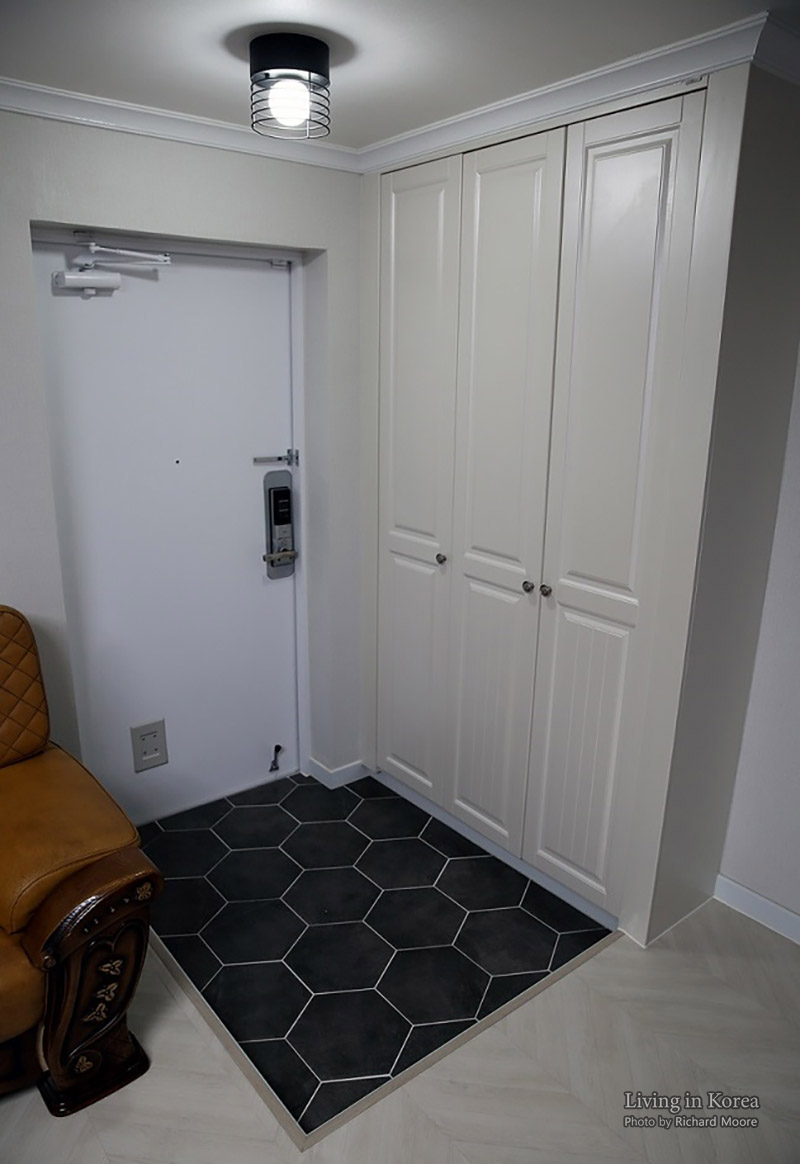
The step up is very slight and can be easy to trip on if you aren’t used to them. The height difference helps to mark the differentiation from outside to inside and therefore where the shoes are to remain while the people go inside. Your home is your rules, so feel free to keep your shoes on indoors if you wish at your own residence. When you visit someone else’s home, the expectation is you will remove your shoes when you enter so the dirt or grime on shoes isn’t brought into a home.
Removing shoes at a home or certain restaurants makes it very easy to see if socks have holes in them which can look bad for the wearer. As socks are normally white, they are easy to turn gray or black if the floor of a home is dirty. Guests' socks turning a darker color looks bad on the host.
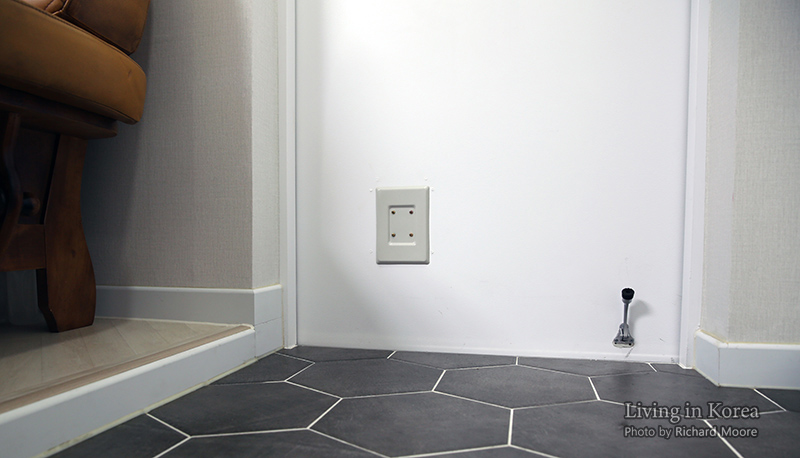
Electronic locks will lock themselves when the door closes and will frequently give a warning beep if the door is left open or the lock didn’t engage. If the lock has a built-in door handle, then turning the inside handle frequently unlocks the door. If the door closes successfully it will give a different confirmation beep. And if the batteries inside the unit are getting low it will beep a much longer tune to let you know they should be replaced before you get yourself locked out of your own home. The panel slides open and there are usually 4 AA batteries inside.
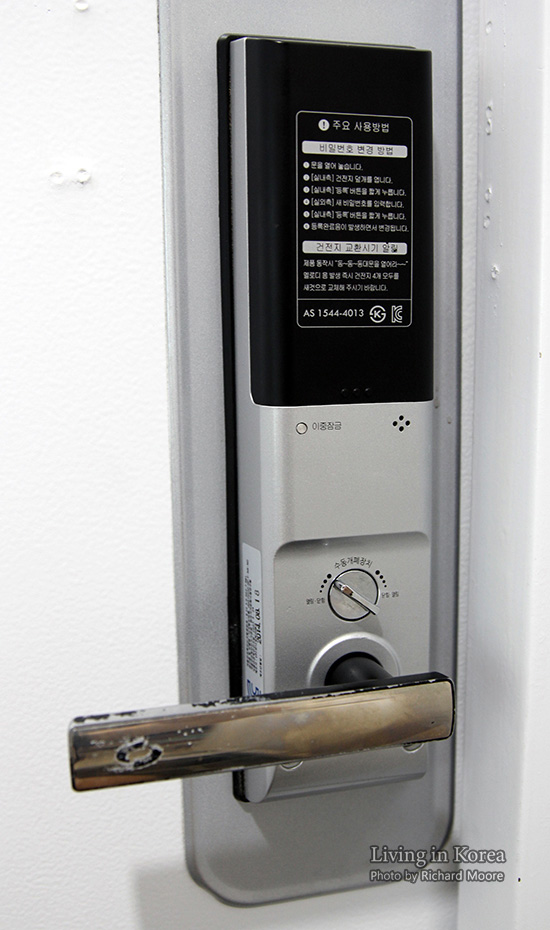
The images below show a lock separate from the handle, which unlocks from pushing the small button or turning the knob, and a swivel lock (걸쇠, geolsoe) which allows the door to be open a limited amount. Doors and door frames are predominately made of metal, so these locks have solid foundations.
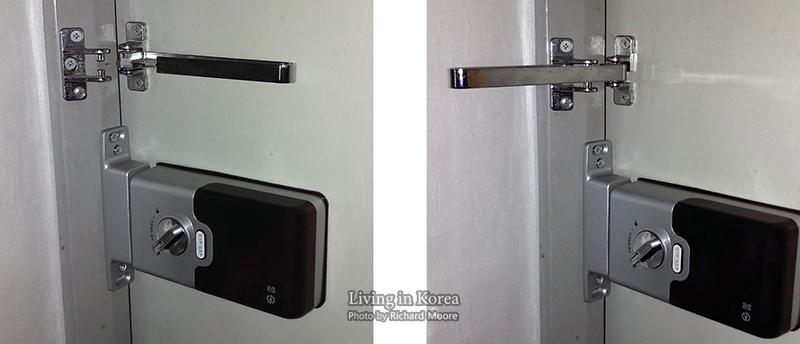
Some shoe closets are built in and some are standalone units. The sample here is built in and has three doors yet perhaps "built in" is the wrong term as it sticks out from the wall.
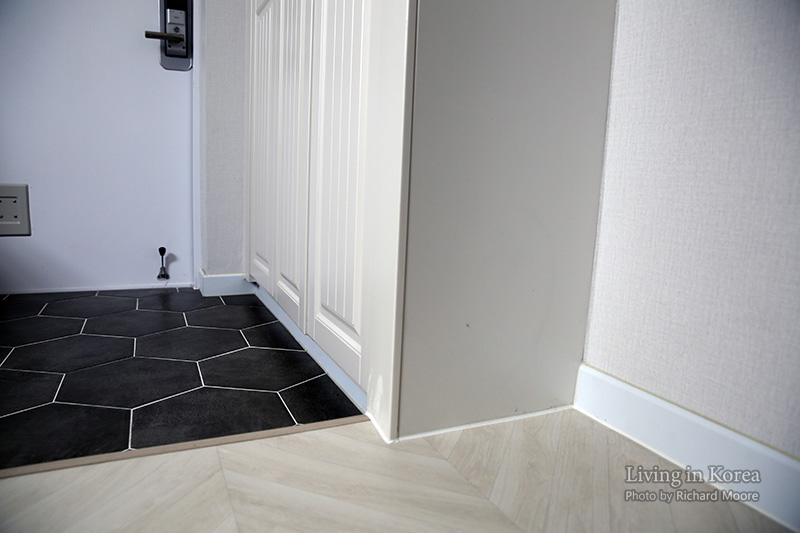
Here, shoes take up 2/3 of the space and umbrellas, bug spray, spare power down converters, and random other items are stored in the last 1/3. The largest shoe size sold in most stores is around 285 mm which is a 10.5 in US and 44 in Europe. If your shoes are this size or longer it is not only hard to find shoes your size in stores, but also the storage units might not be deep enough to store your shoes. When you are trying to find a residence, we recommend you put a shoe into the shoe closet and see if the door shuts properly.
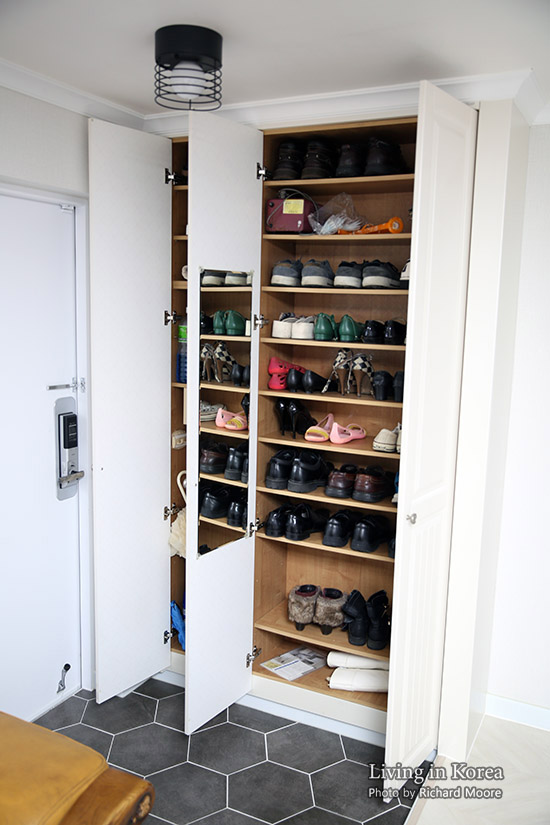
When you are visiting someone else’s home, they typically don’t put your shoes in the shoe closet, but instead keep them in this sunken area and turn them around so it is more convenient to put them on when you leave.

Now that you've taken off your shoes, let's take a look at the living room.